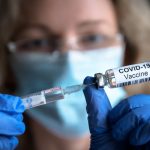
Microplastics, which stem from the breakdown of various plastic waste, pose a significant challenge in cleaning up our oceans and waterways. These tiny plastic particles not only harm marine life but also attract harmful bacteria, making them a risk to human health.
In a groundbreaking study published in ACS Nano, researchers introduced a novel solution using microscale robots (microrobots) to capture both microplastics and bacteria from water sources. These microrobots are designed to be decontaminated and reused, offering a sustainable approach to combating plastic pollution.
Measuring 5 millimeters or less, microplastics are easily ingested by marine organisms, potentially entering the human food chain. The study’s innovative use of microrobots showcases a promising method to tackle this environmental crisis by efficiently removing both plastic and bacteria simultaneously.
The microrobots, constructed from positively charged polymers and magnetic microparticles, exhibit a swarm behavior similar to natural systems like schools of fish. By manipulating the magnetic field, researchers were able to control the movement and speed of these swarming robots in water environments.
Experimental results demonstrated the effectiveness of the microrobots in capturing bacteria and microplastics, with an impressive 80% bacteria removal rate. The decontamination process involved detaching bacteria from the robots using ultrasound and disinfecting them with ultraviolet radiation, ensuring the robots could be reused efficiently.
This innovative microrobotic system presents a promising solution for the efficient removal of plastic and bacteria from water sources, marking a significant step towards addressing the pressing issue of plastic pollution.
Comments






